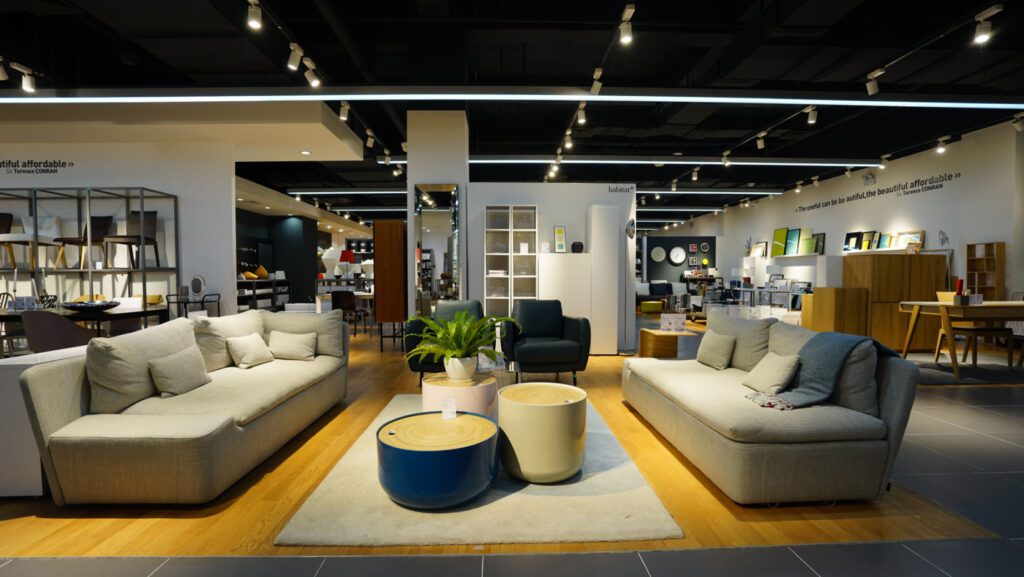In the highly competitive furniture retail world, capturing customers’ attention and interest is crucial for success. Creating an exceptional customer experience is a top priority for store owners and managers. While product quality and pricing undoubtedly play important roles, the significance of effective merchandising and store design cannot be overstated. In this blog post, we will explore how merchandising and store design impact the customer experience, influence buying decisions, and ultimately drive sales in furniture stores. Additionally, we’ll delve into the realm of e-commerce and discuss the role of visual merchandising in enhancing the buying experience on furniture websites.
Enhancing the Customer Experience:
Well-executed merchandising and store design have the power to create an immersive and memorable customer experience. Here’s how:
- Inspirational Displays: Thoughtfully arranged furniture displays can inspire customers by showcasing various styles, room setups, and design ideas. These displays allow customers to visualize how furniture items could fit into their own homes, sparking their imagination and creating a stronger emotional connection.
- Easy Navigation: A well-organized store layout with clear signage and designated sections allows customers to navigate effortlessly. A seamless shopping experience reduces frustration and encourages customers to explore further, increasing browsing time and potentially increasing sales.
- Comfortable Ambiance: Store design elements such as lighting, color schemes, and music create a welcoming and comfortable environment. The right ambiance can evoke positive emotions and encourage customers to spend more time in the store, increasing the likelihood of purchasing.
Influencing Buying Decisions:
Merchandising and store design can significantly impact customers’ buying decisions. By employing effective strategies, retailers can positively influence consumer behavior:
- Strategic Product Placement: Placing popular or high-margin items at eye level or in prominent locations within the store can capture customer attention and increase their chances of purchasing. Cross-merchandising related products can also lead to upselling and additional sales.
- Storytelling through Visuals: Well-curated displays and visual merchandising tell a story about the furniture pieces and create an emotional connection with customers. By presenting furniture items in appealing settings, retailers can help customers envision the products in their own lives, increasing the likelihood of a purchase.
- Fostering Engagement: Interactive displays or vignettes that allow customers to touch, feel, and interact with furniture items create a sense of engagement. This hands-on experience enables customers to evaluate the quality and functionality of the products, building trust and increasing the likelihood of a purchase.
Increasing Sales in E-commerce:
As the digital landscape expands, furniture retailers must optimize their online platforms. Visual merchandising plays a significant role in enhancing the buying experience on e-commerce furniture websites:
- High-Quality Product Imagery: Providing multiple high-resolution images of furniture items from various angles allows customers to examine the product details, textures, and finishes thoroughly. Additionally, 360-degree views or virtual reality experiences can simulate the in-store feel and assist customers in making more informed decisions.
- Virtual Room Setups: Offering virtual room visualization tools enables customers to visualize how furniture will look in their spaces. By integrating augmented reality (AR) or 3D room design features, retailers can bridge the gap between online browsing and in-store experiences, boosting customer confidence in their purchase decisions.
- Personalized Recommendations: eCommerce platforms can provide personalized product recommendations based on browsing and purchasing history using customer data and algorithms. By tailoring suggestions to individual customers’ preferences, retailers can enhance the customer experience and increase the likelihood of cross-selling and upselling.
In furniture retail, the customer experience will be impacted by merchandising and store design. By creating exceptional customer experiences, influencing buying decisions, and optimizing the e-commerce landscape with visual merchandising, furniture retailers can stand out from the competition and drive increased sales. Store owners and managers must recognize the power of these strategies and invest in creating captivating and customer-centric environments, both in-store and online, to maximize their business potential.













